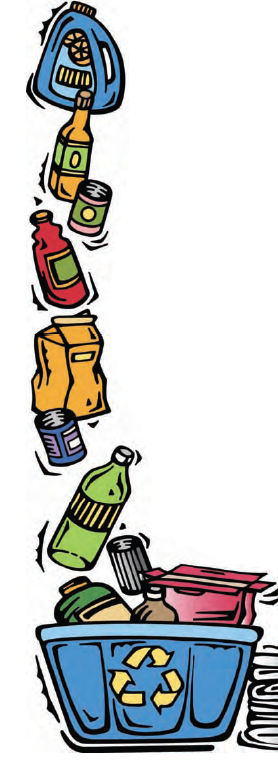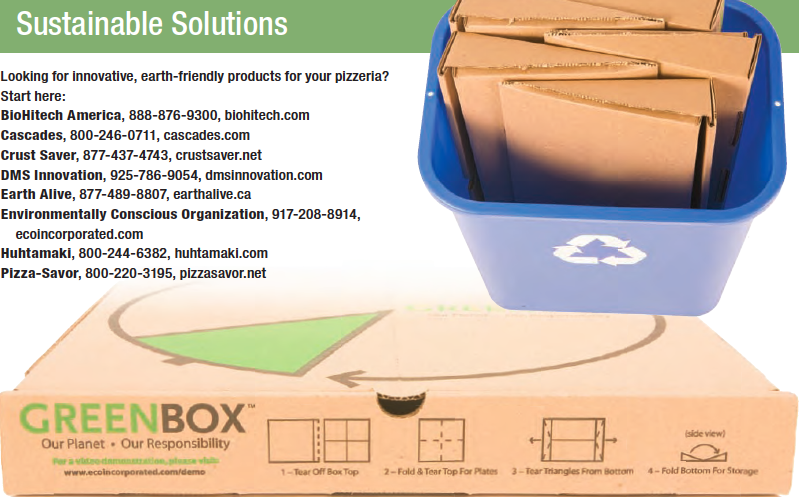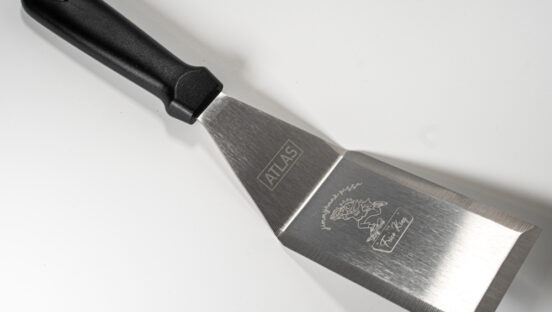 The restaurant world is getting a little greener all the time. While a mom-and-pop pizzeria may not measure its carbon footprint or have the time and money to chase after a LEED certification, you can always seek out practical solutions for waste and recycling that can help green your business. And you might even find that starting a recycling program creates good PR. According to statistics released by the National Restaurant Association, four out of 10 consumers are likely to be influenced by a restaurant’s sustainability efforts, and 40% of full-service restaurants in the United States are expected to adapt to a greener business model in 2010. In addition, 31% of quick-service restaurants are expected to adopt more sustainable practices this year, adding up to some serious marketing potential—how will you compete?
The restaurant world is getting a little greener all the time. While a mom-and-pop pizzeria may not measure its carbon footprint or have the time and money to chase after a LEED certification, you can always seek out practical solutions for waste and recycling that can help green your business. And you might even find that starting a recycling program creates good PR. According to statistics released by the National Restaurant Association, four out of 10 consumers are likely to be influenced by a restaurant’s sustainability efforts, and 40% of full-service restaurants in the United States are expected to adapt to a greener business model in 2010. In addition, 31% of quick-service restaurants are expected to adopt more sustainable practices this year, adding up to some serious marketing potential—how will you compete?
Where to Start
Chris Bright, CEO of zpizza (zpizza.com), an Irvine, California-based environmentally conscious pizza chain, says his company constantly looks for new ways to recycle in its stores. All zpizza locations use compostable to-go containers and bags, offer specials to customers who recycle, and are developing a reusable pizza tray for carryout orders that can be exchanged in future orders.
California is fertile ground for tackling sustainability issues, and Bright recommends operators access their own community’s offerings before making any major moves. “It’s unfortunate that, even in today’s environment, recycling is not always offered,” he points out. “In some municipalities and retail centers, there are not always recycling centers available; in other cases, when it is offered, you can’t recycle some materials, such as glass.” If your community does have a recycling program, Bright’s best advice is to always take credit for your work. “You want the customer to know that this is part of your restaurant’s culture and what you’re about,” he notes. To this end, when starting a recycling program, make sure you let your customers know you recycle, and keep your recycling bins visible and clearly labeled.
Thankfully, pizzeria owners in rural areas needn’t lose hope—utilizing private recycling companies is always an option, and can even provide a source of income. Colleen Oteri, communications manager for the Green Restaurant Association (GRA), notes that some private companies will pay for your trash. “Private sector companies turn a great profi t on your glass and aluminum,” she says. “People don’t always realize that you can make money off your recycling.” To track down a private recycling company, Oteri suggests operators contact the GRA, since the organization has a large database of sustainable restaurant services. But, private enterprise aside, recycling is a cost-saving solution that is often overlooked: Cities will charge you for trash hauling based on weight, but “if you take out the glass bottles, the tin cans and everything else that can be recycled, your actual waste is much lighter at the end of the day,” she says. “We see restaurants doing this and cutting that trash bill by 50%.”
Inside the Box
Historically, the pizza box has received a few critical jabs from a recycling standpoint. Most are too large to fit into recycling bins, and boxes often have to be thrown away when the bottom becomes soaked with grease. While traditional boxes can be recycled when the grease-soaked area is removed, as Bright points out, that’s just not practical for businesses, even environmentally friendly ones. However, new products have rethought the to-go box on both of these fronts. Mesh box liners have been designed to keep pizza crusts dry and help preserve the integrity and recyclability of the box, while reusable boxes offer some serious long-term savings for operators. One manufacturer has even rethought the pizza box design by creating a product that starts out as a normal pizza box composed of recyclable and compostable corrugate but breaks down into four serving plates and a storage container for leftovers (and also fits easily into a recycling bin). “When I was in college, I basically lived on pizza,” says William Walsh, president of the New York-based Environmentally Conscious Organization. “Americans consume more than 3 billion pizzas per year, and most of those require a box. We have one planet, and I truly believe it’s our responsibility to take care of it; pizza boxes are a good place to start.”
Additional Considerations
Mind your materials when choosing products for your business. For example, Styrofoam is one of the most misleading materials in the restaurant industry today; a cup may be recyclable, but recycling Styrofoam can’t always be done practically, as there are only a handful of recycling plants in the United States that work with this material. “Recyclers bring in Styrofoam based on weight, so even if you’re close to a plant that can do it, it takes a lot for it to be done profitably at the plant,” Oteri says. “But in terms of the environmental impact, it’s made of a petroleum-based material, so it doesn’t degrade and stays in a landfill, and then it gets in the soil and the water.”
Reducing food waste is another factor restaurant owners should consider. According to GRA data, restaurants often throw away 25% of each meal. Reducing portion size is a great way to save money and create less waste, but if heaping portions are part of your draw, commercial composting is another environmentally friendly waste solution. “When people fi rst hear ‘composting,’ they think, ‘This is some earthy, hippie stuff,’ but just like commercial recycling, the private sector offers a lot of compost solutions,” Oteri says. “We advise our restaurants to do this. We don’t tell them to take their food home and put it in their backyard; the truck just comes and picks it up.”
Finally, realize that the recycling potential for pizzerias goes beyond soda cans, leftovers and to-go boxes—you can also recycle your cooking oil. Traditionally, fats and oils have been used to make soap and candles, but more companies are emerging that will help restaurants avoid the service fee for disposing oil. For example, Sammy’s Woodfired Pizza (sammyspizza.com), a chain with 18 locations in California and Nevada, avoids an extra bill by donating old cooking oil to a company that manufactures biodiesel. “We’ve been recycling our cardboard, glass, plastic and cans for years,” says Jeff Moogk, corporate chef for Sammy’s. “We avoid an extra fee by donating our oil, and instead of it being hauled off and disposed somewhere, the oil is getting reused.” Sammy’s works with New Leaf Biofuels based in San Diego, and Moogk recommends that operators contact their state restaurant association to see which organizations are available to offer this free service.
At the end of the day, all of your garbage has to go somewhere. Recycling may add a few steps to your daily chores, but it’s also financially and environmentally benefi cial, and can be a feather in your cap when planning your future marketing. Pizza is coming full force into the recycling world, and utilizing innovative products and services not only provides your products with a distinctive differentiation but also aids your earth-friendly efforts. As research shows, modern customers care about the environment more than ever, and making it part of your business’ priorities can be a marketing tool that sparks greater loyalty and generates purchases. As Oteri notes, the most common mistake restaurant owners make today isn’t a mistake at all—it’s a misconception. “People think this is going to be hard and messy and they’re going to have to retrain the staff,” she says. “We always remind restaurants that recycling is just a different and simple way of sorting your garbage.”













